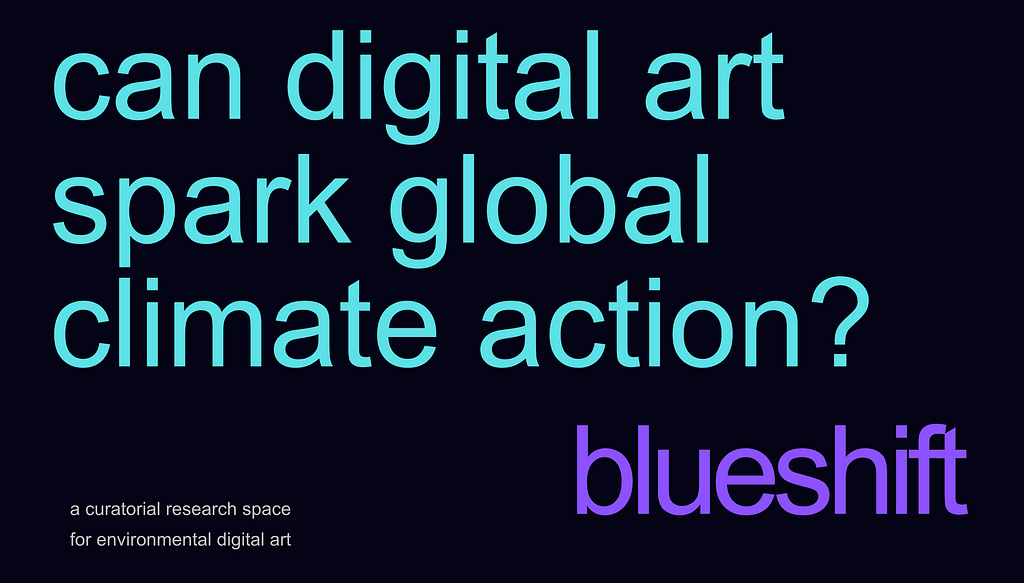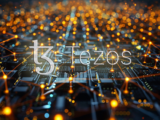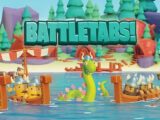
Tezos Commons :: Using Digital Art To Trigger Environmental Impact
August 21, 2024A closer look at Blueshift, a new curational research space for making a positive climate impact with environmental digital art.
Using digital art to increase environmental awareness is not entirely new within the Tezos ecosystem. One of the most immediate examples that came to me was Turtle Vision, a generative art project designed to mimic a sea turtle’s existence in the ocean in 2023.
Using art as a medium to convey important issues such as climate change and, in our prior case, plastic waste in oceans presents a compelling opportunity to do good with a still underdeveloped technology. That’s precisely the mindset of Blueshift, a new curatorial research space for utilizing digital art for positive climate impact.
Let’s discuss Blueshift and how it aims to impact climate change with digital art positively. Then, let’s showcase a few of their exhibitions and collected works.
What Exactly is Blueshift?
Image: Helio Santos
Blueshift is the result of a previous project known as Artezeic. Conceived by Diane Drubay of We Are Museums and WAC Lab in 2021, she began collecting environmental art on the popular hic et nunc (H=N) Tezos-based platform.
The initial idea of Artezeic was to become an art collective in the form of a DAO (digital autonomous organization). However, this did not fully manifest itself. As a result, Blueshift was formed with a specific focus on identifying how digital art can trigger climate actions and real tangible impact.
The platform aims to progressively reveal findings by collecting environmental digital art, curating virtual and physical exhibitions, and organizing public discussions. These efforts serve as a research avenue, exploring how environmental digital art can inspire eco-conscious behaviors and contribute to a sustainable future.
Speaking to Diane Drubay, she shared a few words on their exhibitions, collaboration with UnicornDAO, and Blueshift’s mission.
The August exhibition is not live yet. It will be released soon, though. UnicornDAO asked me to select 35 artworks they could collect for their Tezos vault. This is one example of what Blueshift does, among other things, like curation of virtual shows and IRL shows (two shows are planned with galleries, one show during a major environmental event, and a drop with a marketplace until the end of the year), participating or organizing panel discussions (at Berlin Art Week in September or live via Twitter Spaces), writing articles on the topic, and more. The Blueshift collection is constantly growing with new artworks being added every week.The shape of Blueshift is fluid and in perpetual development. Its goal is to support environmental digital artists and conduct research on climate action. The virtual shows on Blueshift are just curatorial research for now, but soon, more curators will join to create a collective movement.For now, Blueshift is a simple web2 website connected to different web3 and immersive platforms, but the goal is to turn it into a proper web3 space so exhibitions, acquisitions and discussions could lead to fundraisers and other web3 mechanisms to support artists, local initiatives and NGOs.
While environmental art is beneficial in its own right for raising awareness towards environmental-related concerns, there needs to be this added layer of support for digital artists and their works. By providing that medium with Blueshift, it’s cool to see the level of support that will be brought to Tezos-based artists in the form of both the artists through collecting works and also the impact of the shows and exhibitions.
Let’s look at a recent exhibition and some of Blueshift’s digital art collection.
Exhibitions and Digital Art Collection
Blueshift’s “NEWROOTS — The Anthropophytomorphic Age” exhibition explores a combination of human and plant characteristics, encouraging a shift from a human-centered view to a nature-focused perspective. Using digital art, artists blend human forms with elements of nature, symbolizing a deep connection and interdependence with the environment.
When you go to the exhibition, after pressing the blue circle, you’ll be prompted to enter a username to proceed to the virtual show. It also recommends using your computer’s microphone and camera, so make sure to enable those for the best experience.
After following those steps, you’ll see a welcome message like the one above, which shows some information about the show. There is also a navigation menu at the top left of your screen that will take you to specific sections of the show.
This is the final space of the show, showcasing Gabriel Massan’s video game Third World: The Bottom Dimension. If you progress a little further, you’ll see two works of similar style from Alfacenttauri, also known as Felipe Sepúlveda. One of these works is available for purchase on Teia.
Image: Helios Santos
Outside of virtual shows and exhibitions, Blueshift has a ton of existing collected digital art. One of my favorites is from Helios Santos, titled “Borderlands II“. While it’s probably my all-time favorite video game, I’m a fan of the synthetic images, which are futuristic but show a Wild West image.
It’s worth noting Blueshift has an open call for new artists and works to add to their collection. If you are an environmental digital artist, make sure to fill out their form!
Final Thoughts
Blueshift is transforming digital art into a force for environmental change. Through innovative exhibitions, it challenges us to rethink our connection to nature and inspires climate action. Make sure to get involved, explore, contribute, and help drive sustainability through digital art by applying to the open call, collecting works from the collection, or participating in virtual shows!
Using Digital Art To Trigger Environmental Impact was originally published in Tezos Commons on Medium, where people are continuing the conversation by highlighting and responding to this story.


